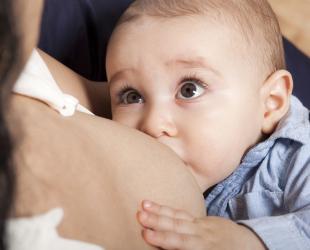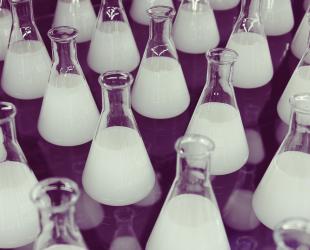There are ways to limit your exposure to toxins – and your baby’s.

Environmental toxins are chemicals and compounds found in our everyday world. They can get into our bodies through the food we eat, the water we drink, and the air we breathe.
Sometimes, you might see or read stories in the media about toxins and breastfeeding. Many reports present this information in a shocking way to make a good story. This can make parents worry and may even make breastfeeding seem less valuable than it really is.
How are environmental toxins tested?
There are many ways to test for levels of toxins in the human body. Scientists often test samples of urine, blood, hair and breastmilk. However, breastmilk is often the only one mentioned in news reports.
If toxins are found in breastmilk, it shows that the women living in the area being studied have been exposed to those toxins in their diet or environment. This doesn’t really say anything about breastfeeding or breastmilk.
Breastfeeding is still the safest way to feed your baby
By breastfeeding, you’re giving your baby safe, healthy nutrition. If you stopped breastfeeding because of worries about toxins, your baby could actually face more health risks. Experts around the world agree that breastfeeding is the safest way to support the health and growth of babies, even when common toxins are present in normal amounts.1,2
Breastmilk helps protect your baby against environmental toxins
Babies are most affected by environmental toxins while they’re inside their mother’s womb, not while breastfeeding. It’s during the developmental stages that environmental toxins can be most damaging.3
After birth, breastfeeding is the best protection that a baby has for normal growth and development. Breastmilk contains antioxidants and immune factors that help reduce the effects of any toxins your baby might be exposed to in their environment. Some research suggests that breastfeeding may also help support babies who were exposed to toxins during pregnancy,3 but the greatest protection comes from reducing exposure during pregnancy itself.
Reducing exposure to environmental toxins
Here are some ways to help protect yourself and your baby:
- Breastfeed your baby exclusively for the first 6 months.
- Avoid smoking, vaping, recreational drugs, and alcohol.
- Eat less animal fat.
- Eat more grains, fruits, and vegetables.
- Wash or peel fruits and vegetables to help remove pesticides.
- Make sure you get enough omega-3 fatty acids for your baby’s growing brain.
- Limit contact with chemicals like paint solvents, glues, furniture strippers, dry-cleaned clothes, nail polish, and petrol fumes.
- Try not to breathe in smoke or fumes and avoid handling ash from a fire.
- Avoid toxic chemicals at work.
- If you think you’ve been exposed to chemicals or toxins, at work or anywhere, it’s a good idea to change out of your clothes and shoes and wash your hands before caring for your baby.
Conclusion
We’re all exposed to some pollutants, and research is ongoing about their effects. But the benefits of breastfeeding, for both you and your baby, far outweigh any risks from the small amounts of toxins sometimes found in breastmilk. Take steps to reduce toxins where you can and keep breastfeeding.
© Australian Breastfeeding Association December 2025
- van den Berg, M., Kypke, K., Kotz, A., Tritscher, A., Lee, S. Y., Magulova, K., Fiedler, H., & Malisch, R. (2017). WHO/UNEP global surveys of PCDDs, PCDFs, PCBs and DDTs in human milk and benefit-risk evaluation of breastfeeding. Archives of Toxicology, 91(1), 83–96. https://doi.org/10.1007/s00204-016-1802-z
- Centers for Disease Control and Prevention (CDC). Breastfeeding Special Circumstances – Environmental and chemical exposures. Updated January 17, 2024. Available at: https://www.cdc.gov/breastfeeding-special-circumstances/hcp/exposures/index.html.
- Mead M. N. (2008). Contaminants in human milk: Weighing the risks against the benefits of breastfeeding. Environmental Health Perspectives, 116(10), A427–A434. https://www.ncbi.nlm.nih.gov/pmc/articles/PMC2569122/


